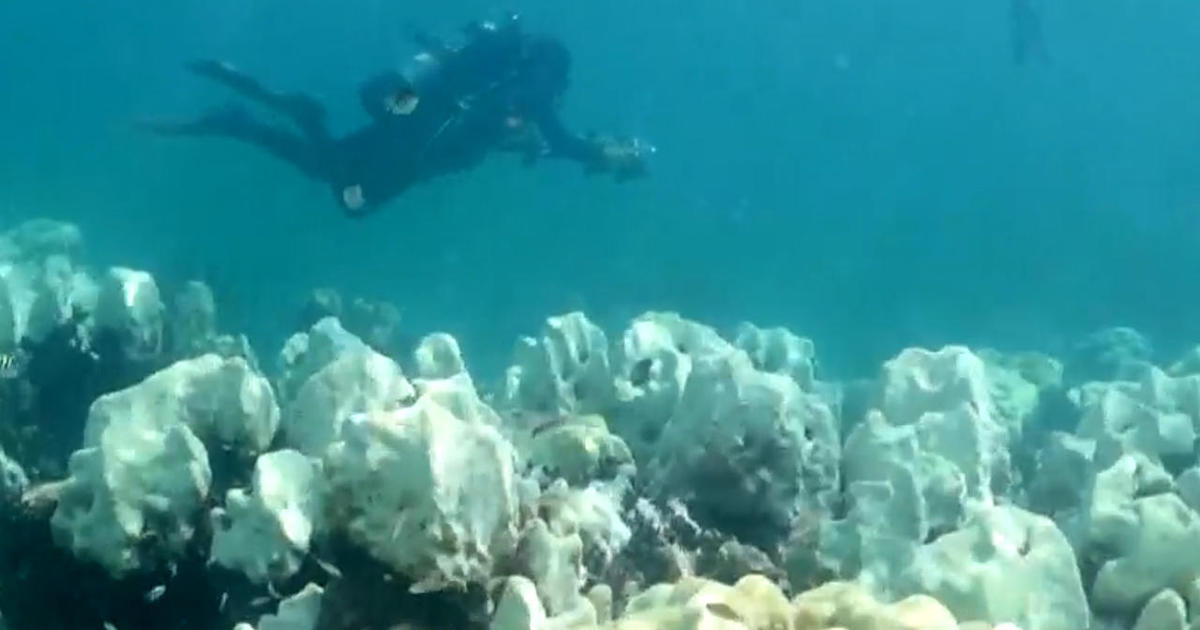The coral reefs off the shores of the Florida Keys should be vibrant and colorful this time of year. But after some of the highest recorded water surface temperatures, scientists say they’re seeing a very different picture.
Last month, a marine buoy in the nearby Upper Keys measured the surface water temperature at more than 100 degrees, which scientists believe is due, in part, to human-caused climate change. It’s a trend researchers predict could last well into the fall, with elevated water temperatures continuing to strain coral, which has been stripped of its color due to the rising temperatures.
Scientists with the National Oceanic and Atmospheric Administration said Cheeca Rocks, off of Islamorada, has been one of the reefs that has held on.
“This has been a resilient reef,” said Ian Enochs, who has been doing research there for about 10 years, as head of the coral program at NOAA’s Atlantic Oceanographic and Meteorological Laboratory.
He wasn’t prepared for the state of Cheeca Rocks today: a virtual moonscape, a condition known as bleaching. Extremely warm water causes the coral to lose the algae it needs to survive, leaving them looking like ghosts.
“As a scientist, we are trying not to be emotional,” said Enochs. “For me just seeing the scale of death, it’s hard to kind of come to terms with that.”
The scale of the bleaching, he said, “is not subtle; it’s a hundred percent.”
CBS News
Now, there’s a race to save the coral – by removing them from their habitat.
“We are trying to rescue as much of the genetic diversity and as much of the stock that we have. It’s paramount to the survival of this species in the Florida Keys,” said Phanor Montoya-Maya, program manager of the Coral Restoration Foundation, headquartered in Key Largo Florida.
Volunteers have been taking 20 different species of coral from the sea, and to their partners at the Keys Marine Lab, where they are placed into tanks that simulate more normal conditions.
CBS News
The goal is to keep them alive and return them once the waters have cooled.
“We have seen a species disappear, but an entire ecosystem? We haven’t seen that. And I don’t want to be part of the generation that sees that,” said Montoya-Maya.
Reefs cover less than 1% of the Earth’s surface, but are home to 25% of marine species, making them critical to food supply, shoreline protection and tourism.
For sea turtles, it’s a matter of survival.
“This animal was in our oceans when dinosaurs were on our land. So, what we see happening to them is eventually going to affect all of life,” said Bette Zirkelbach, general manager of The Turtle Hospital in Marathon, Fla.
Zirkelbach said warming waters contribute to abnormalities and deformities in turtles, but could also affect the species long-term. For example, nests in warmer sands yield more female turtles.
“As far as hatchlings in the state of Florida, we’re only seeing female hatchlings,” she said.
A fragile ecosystem is at risk. According to NOAA’s Enochs, reducing greenhouse gas emissions is the most important thing people and governments can do. And because coral reefs grow very slowly, the large ones that are lost could take hundreds of years to fully grow back.
Despite the odds, Enochs isn’t willing to give up.
“We have too much at stake,” he said. “And so, we have no other option than to try to turn this around, and I think we can.”














